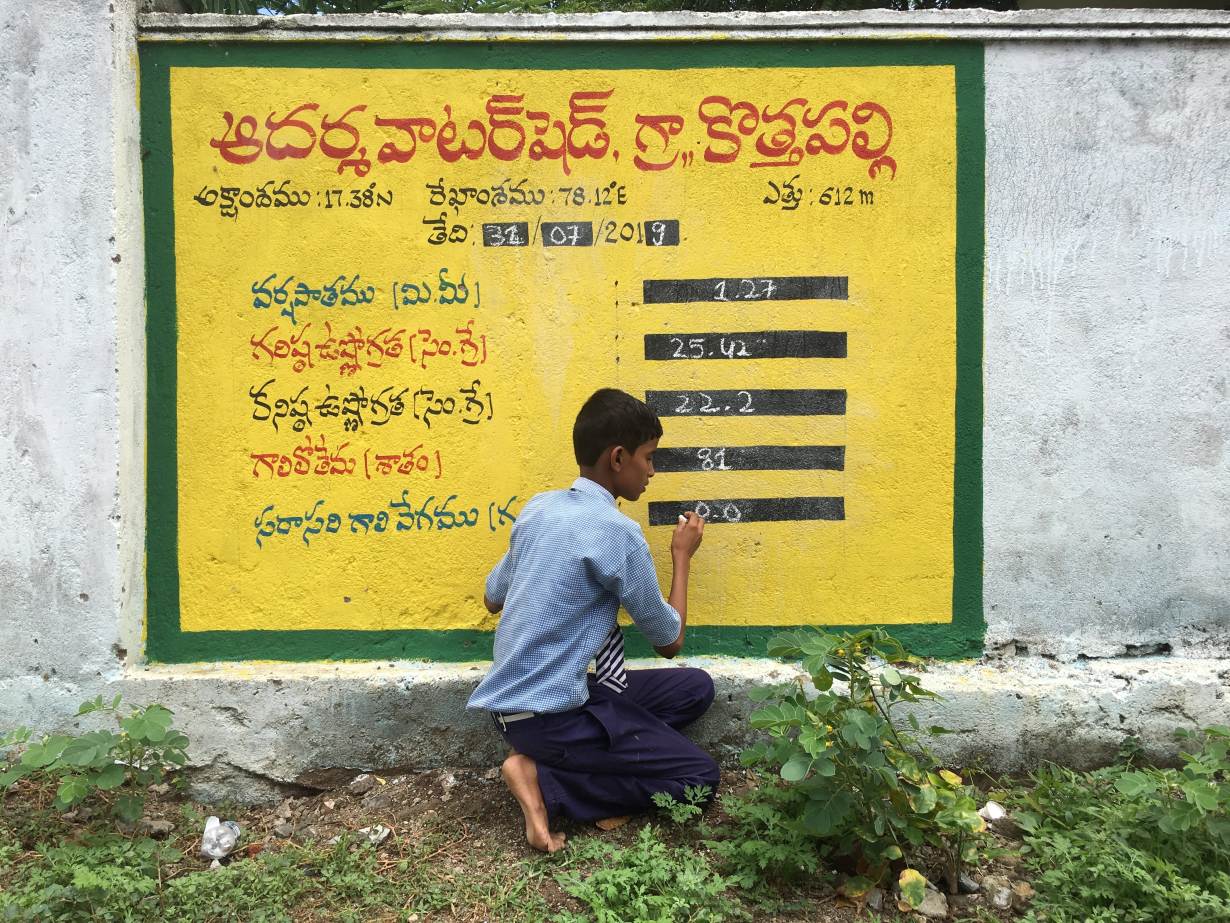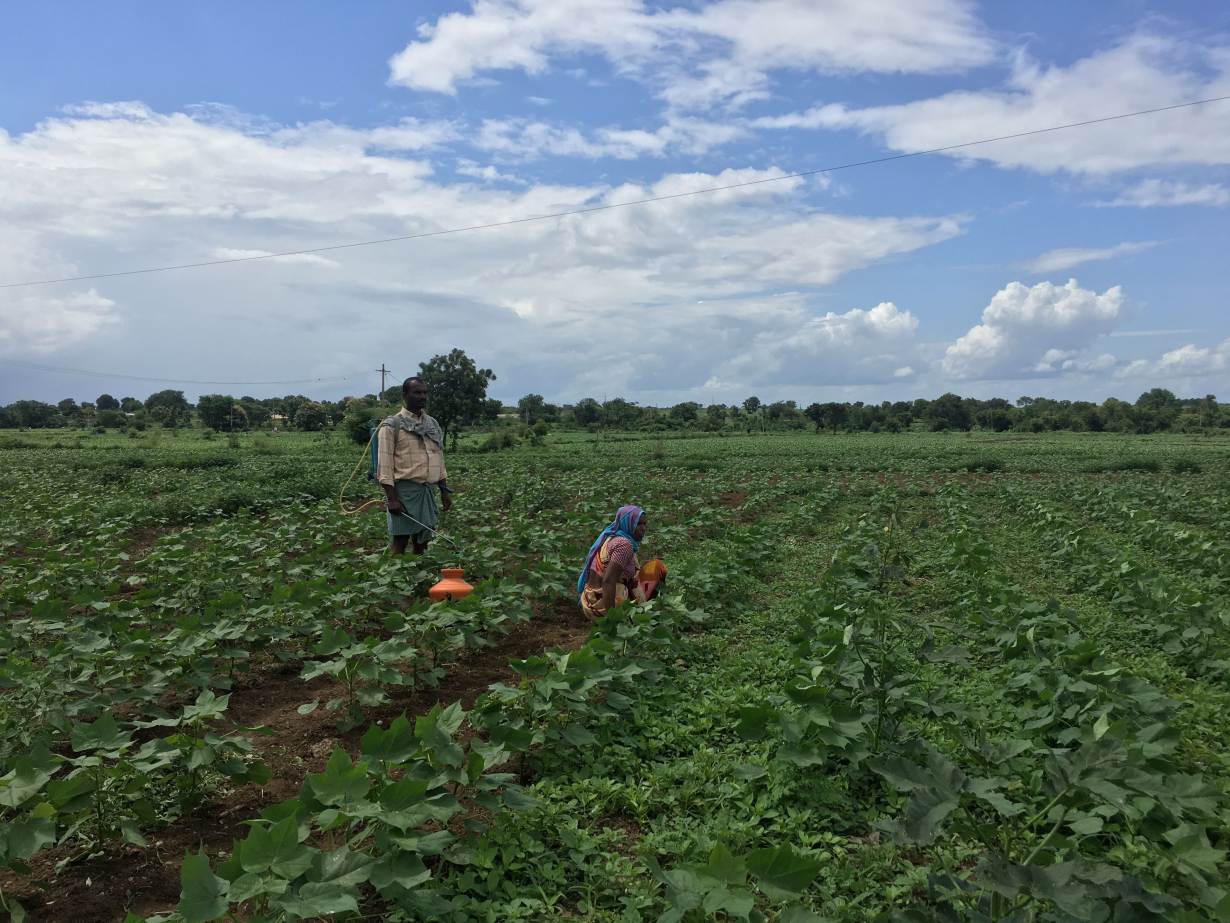These schoolchildren in India are learning to read the weather
A weather station monitored by students – part of a range of water-smart innovations – has turned around a parched village.
T
he village school in Kothapally, in southern India, has only a handful of amenities – blackboards, desks and chairs, a playground with a wooden bench under a tree. But it has one unusual resource: an automatic weather station.
Nestled among farms, the government school is the only one in the southern Indian state of Telangana – and possibly in the country – to have a weather station on its premises, scientists overseeing the station said.
Ninth graders, all children of local farmers, record rainfall, humidity, wind speed and the air temperature as part of a bigger project led by an international crop research institute to customise the village’s farming to its water availability.
“I understand how this works. I know if it rains well the previous day it is a good time to put fertilizer on the crops the next day,” said Vamshi Voggu, 14, who doesn’t much like science lessons but enjoys his morning weather-monitoring job at school.
“My parents are farmers. This information helps them,” Voggu told the Thomson Reuters Foundation during a class break, with his giggly friends chiming in on how farmers in the village benefit from the device.

Ninth grader Vamshi Voggu writes readings from the automatic weather station on a wall outside the village high school in Kothapally, India, on July 31, 2019. Thomson Reuters Foundation/Roli Srivastava
Morning Drill
When Binkam Sudhakar joined Kothapally high school as its principal four years ago, he had never seen a weather station before.
Now he considers it the school’s best tool for practical lessons on climate change, a departure from the rote learning common in the Indian education system.
Every morning, before the school assembly, two students walk to the station with a notebook and pen, pull out the mobile phone shaped display unit and check rain and temperature readings by punching a few buttons.
They then write the readings on the colourful weather chart painted on the wall outside the school.
Local farmers say the daily bulletins are hugely helpful.
“This is very important. We check the rainfall here on our way to work,” said Voggu Anjaiah, 50, who owns six acres of farmland and checks the weather readings every day.
“I grow cotton, bitter gourd, green beans and pigeon peas. Earlier we grew only cotton. We did not know how much it rained. Now that we do, we understand when the soil moisture is good and have started growing vegetables,” he said.
But with many farmers illiterate, less than half of village farmers check the weather station readings like Anjaiah does.
Some children read out the information from the board to their parents who never went to school. Others students share important updates, such as good rainfall the previous day, when they get home from school.
The young weather recorders believe they are engaged in an important task.
“I never miss my turn,” Vamshi said.

Mohammad Sarvar with his wife Razia Begum on their farmland in Kothapally village, India, on July 31, 2019. Thomson Reuters Foundation/Roli Srivastava
Turnaround
When Venkat Reddy of child rights organisation MV Foundation first visited Kothapally in 1991, he saw vast tracts of dry farmland and children working as labourers.
Four years later, after intensive campaigns involving young people going door-to-door to urge parents, employers and village council members to send children to school, Kothapally was declared ‘child labour free’ by the local government.
“The entire village came together for its children,” Reddy said by phone from the southern Indian city of Hyderabad.
Student numbers improved in the village primary school, and enough students have stuck with learning that the village now has both a primary and a high school, which offers classes through tenth grade.
And as more children enrolled in school, the weather station readings became accessible to more farmers.
“My parents never made a profit from farming. We were very poor. I was pulled out of school after tenth grade,” said Malleshwar Goud, whose 13-year-old son Gurulingam is in the ninth grade in the village school.
Goud grows pulses, soybeans, maize and vegetables on his farm and said he is no longer dependent on one yield to survive the entire year.
He said he never checks the weather as his son shares the readings with him when he returns from school.
Though it was not planned, Kothapally has become a laboratory for social change experiments, campaigners and scientists said.
Reddy of MV Foundation said his organisation replicated the Kothapally campaign to end child labour across villages in Telangana and neighbouring Andhra Pradesh state, as ICRISAT expanded its watershed management project to 13 villages in different Indian states.
Goud hopes a good school and better crop yields through the year will protect his son’s future.
“He will study until he finds a good job,” Goud said.
The ideas presented in this article aim to inspire adaptation action – they are the views of the author and do not necessarily reflect those of the Global Center on Adaptation.